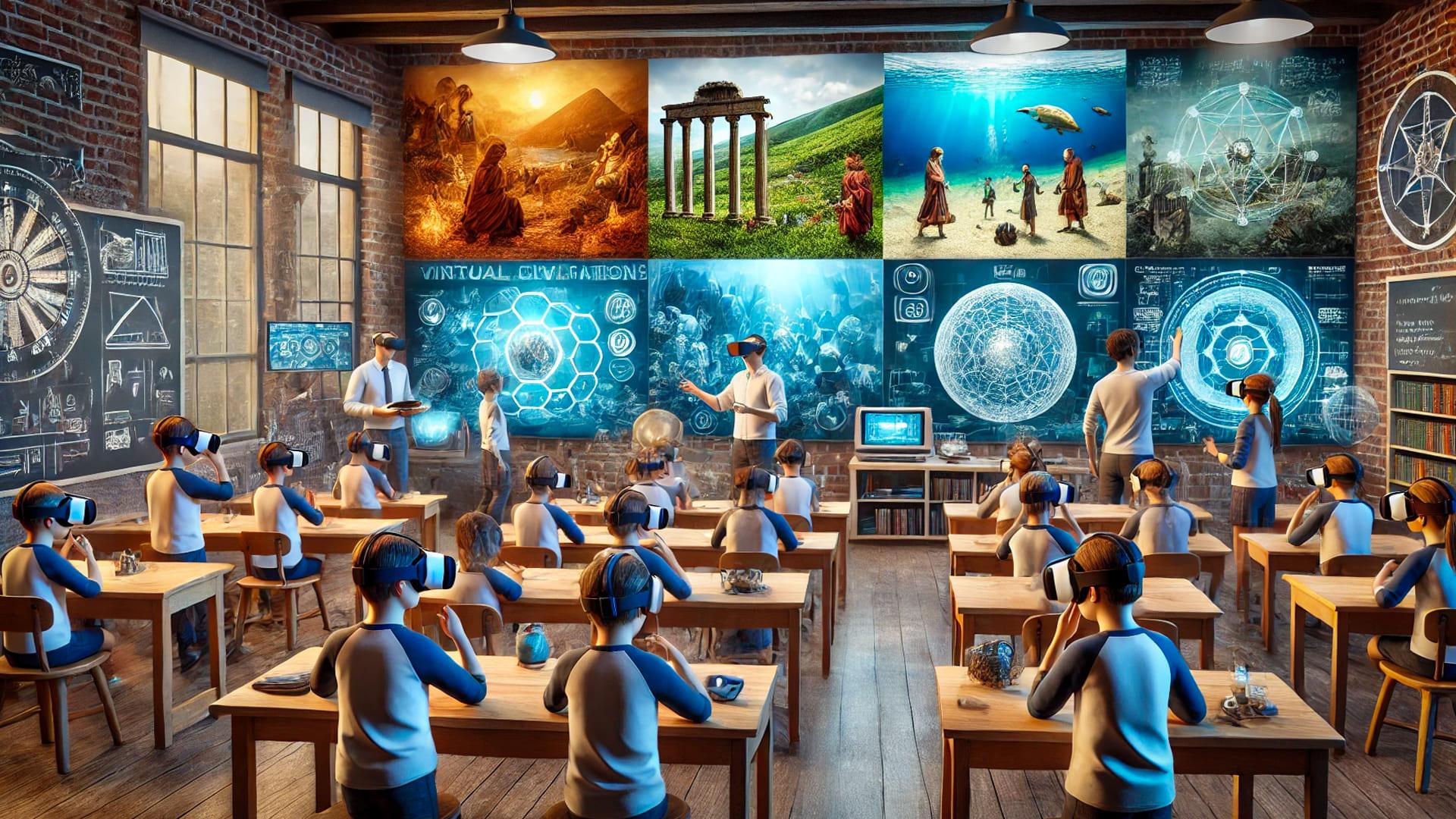Revolutionizing Education: How VR/AR Fuel Immersive Learning in the Modern Classroom
The educational landscape is transforming at lightning speed, driven by rapid advancements in virtual reality (VR) and augmented reality (AR) technology.These immersive tools are revolutionizing the classroom, shifting the paradigm from passive listening to active, experiential learning. by integrating VR and AR in education, schools worldwide are empowering students to dive deeper into subject matter, retain knowledge longer, and engage with lessons like never before.
What is VR/AR in Education?
virtual Reality (VR) transports users into fully simulated 3D environments, offering a sense of presence and interactivity. Augmented Reality (AR) overlays digital elements—such as images,text,or animations—onto the real-world view through devices like smartphones,tablets,or AR glasses.
- VR in classrooms: Examples include virtual laboratories, field trips to historical sites, and interactive simulations.
- AR in learning: Apps that bring textbook diagrams to life or display 3D models during lessons.
Together, VR and AR are igniting a new wave of immersive learning—helping students visualize complex concepts, collaborate in real time, and gain hands-on experience without leaving the classroom.
The Benefits of Immersive Learning with VR/AR
Harnessing VR/AR in the classroom offers a rich array of educational benefits:
- Enhanced Engagement: Interactive 3D environments capture students’ attention better than traditional materials, reducing distractions and increasing enthusiasm for learning.
- Boosted Retention: Studies show that students retain more knowledge when lessons are interactive, visual, and experiential.
- Safe & Accessible Exploration: VR lets students safely explore dangerous chemical reactions or practice medical procedures, while AR can make abstract concepts tangible right from their desks.
- Personalized Learning: Immersive tech can adapt to different learning styles, allowing students to learn at their own pace and revisit concepts as needed.
- improved Collaboration: Multi-user VR platforms facilitate teamwork and problem-solving, whether students are in the same room or continents apart.
- Global Accessibility: Virtual field trips break down geographic and financial barriers, making once-in-a-lifetime experiences available to every learner.
Case Studies: Real-World Applications of VR/AR in Modern Classrooms
The impact of immersive technologies is already being felt in schools and universities across the globe. Here are a few inspiring real-world examples:
- Google Expeditions (VR): Schools worldwide have participated in virtual field trips to the Great Barrier reef, the surface of Mars, and ancient Rome, enabling students to explore and interact with places they might never visit in person.
- zspace (AR/VR): This platform allows students to dissect virtual frogs, examine the human heart in 3D, or explore the solar system—all without physical specimens or leaving the classroom.
- Mondly Languages (VR): Learners engage in lifelike conversational practice in various languages, experiencing real-time feedback and immersion.
- ClassVR (Education-centric): Used in thousands of classrooms, learners can walk through the trenches of World War I, explore the structure of a cell, or experience gravity-free environments.
These pioneering schools report increased student engagement,improved academic performance,and greater enthusiasm for lifelong learning.
First-Hand Experience: Teachers and Students Speak Out
“VR allowed my students to step into the world of Shakespeare, interact with his characters, and truly understand Elizabethan life. Their essays and class discussions reached new heights.”
— Mrs. L. Howard, English Teacher
“Dissecting a digital frog with AR was engaging and mess-free! I could repeat the process multiple times, making sure I understood every organ’s function.”
— Amira, Grade 8 Student
Such first-hand experiences underscore the transformative power of immersive learning and its capacity to spark curiosity in both students and educators.
Practical Tips for Integrating VR/AR in Your Classroom
- Start Small: Experiment with free or low-cost AR apps (like Merge Cube or Google Lens) before investing in hardware-intensive VR setups.
- Focus on Curriculum Alignment: Choose experiences that directly support your learning objectives or enhance key lessons.
- Ensure Accessibility: Look for inclusive tools that accommodate various learning styles and abilities.
- Promote Digital Citizenship: Teach digital etiquette and safety as students explore immersive experiences and interact online.
- encourage reflection: Follow immersive sessions with group discussions or written reflections to deepen learning and connect experiences to the curriculum.
- Partner with EdTech Providers: Many education technology companies offer dedicated onboarding, teacher training, and classroom-friendly support.
Future Trends: The Evolving Role of VR and AR in Education
as AR and VR technologies mature, we can expect even more groundbreaking applications in the classroom:
- AI Integration: Personalized learning pathways guided by artificial intelligence will tailor immersive experiences to individual strengths and growth areas.
- Mixed Reality Classrooms: The convergence of VR, AR, and traditional teaching will blur boundaries between digital and real-world learning spaces.
- Greater Affordability: The continued drop in hardware costs and proliferation of open-source educational content will make immersive learning more accessible than ever.
- Expanded Teacher Roles: Educators will act as facilitators and experience designers, helping students navigate digital landscapes and synthesize hands-on discoveries.
Conclusion: Embracing the Power of Immersive learning
VR and AR in education are paving the way for a rich, interactive, and student-centered future. These technologies make classrooms more dynamic, inclusive, and engaging, unlocking deeper understanding and a lifelong passion for learning.
As schools and teachers embrace immersive learning, the possibilities for student growth are virtually limitless. Whether you’re a parent, educator, or EdTech enthusiast, now is the perfect time to explore how virtual and augmented reality can revolutionize your educational journey.

